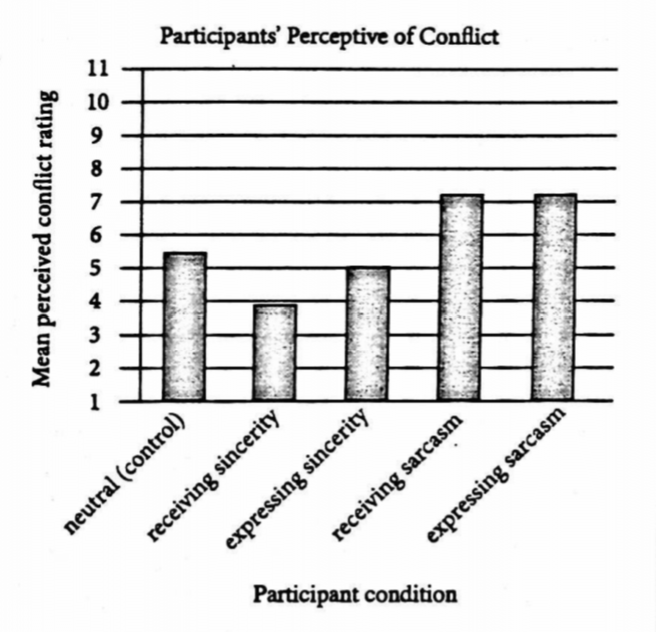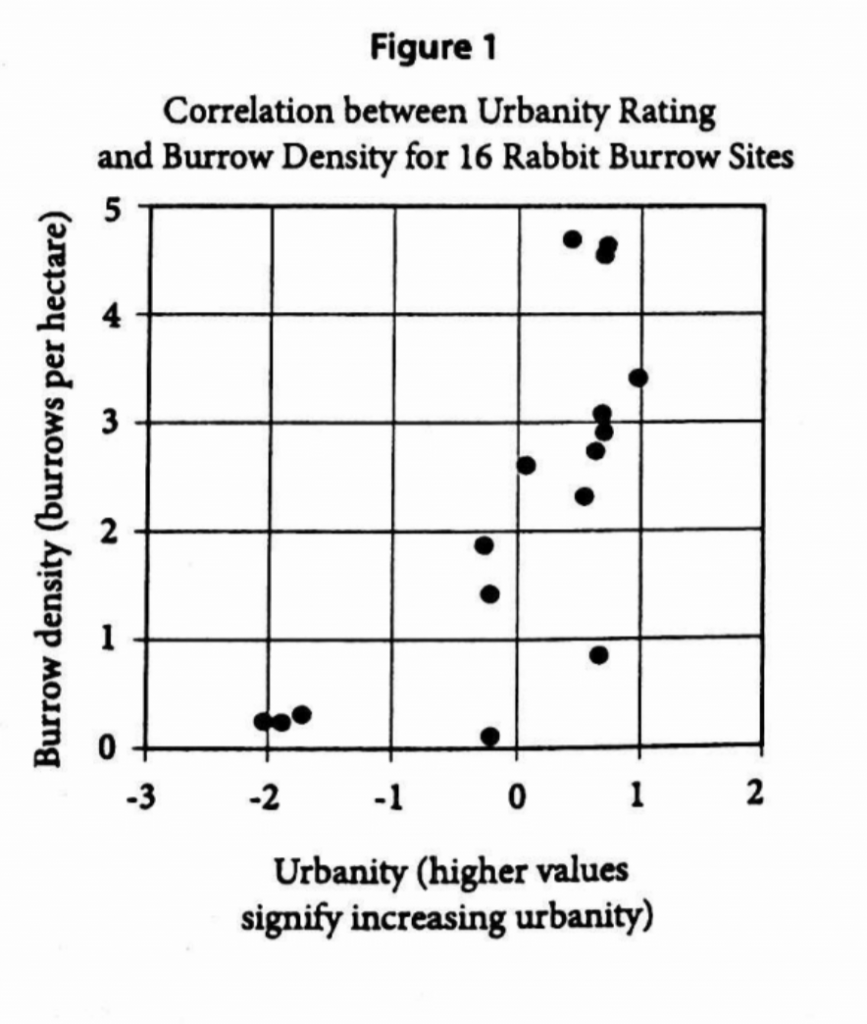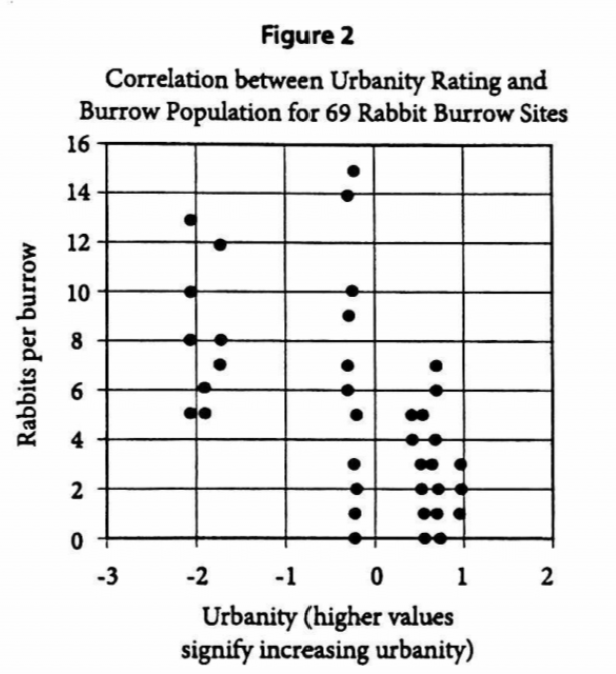Also in:
![]() 简中 (简中)
简中 (简中)
過去這個週末學生考了 2019 年 5 月的 SAT 考試。如果這是你最後一次考 SAT,恭喜你完成了一個艱難的任務!
這裡,我們整理了 2019 年 5 月 SAT 考試當中的 5 篇閱讀文章,幫助學生準備未來的考試。
這些閱讀文章可以如何的幫助你?
1. 這些文章可以讓你知道你的英文程度以及準備考試的程度
首先,讀這些文章。你覺得他們讀起來很簡單還是很難?裡面有沒有很多生字,尤其是那些會影響你理解整篇文章的生字?如果有的話,雖然你可能是在美國讀書或讀國際學校、也知道 “如何讀跟寫英文”,但你還沒有足夠的生字基礎讓你 “達到下一個階段” (也就是大學的階段)。查一下這一些字,然後把它們背起來。這些生字不見得會在下一個 SAT 考試中出現,但是透過真正的 SAT 閱讀文章去認識及學習這些生字可以大大的減低考試中出現不會的生字的機率。
2. 這些文章會告訴你平時應該要讀哪些文章幫你準備閱讀考試
在我們的 Ivy-Way Reading Workbook(Ivy-Way 閱讀技巧書)的第一章節裡,我們教學生在閱讀文章之前要先讀文章最上面的開頭介紹。雖然你的 SAT 考試不會剛好考這幾篇文章,但你還是可以透過這些文章找到它們的來源,然後從來源閱讀更多相關的文章。舉例來說,如果你看第二篇文章 “The Problem with Fair Trade Coffee”,你會看到文章是來自 Stanford Social Innovation Review。閱讀更多來自 Stanford Social Innovation Review 的文章會幫助你習慣閱讀這種風格的文章。
3. 這些文章會幫助你發掘閱讀單元的技巧(如果閱讀單元對你來說不是特別簡單的話)
如果你覺得閱讀單元很簡單,或是你在做完之後還有剩幾分鐘可以檢查,那麼這個技巧可能就對你來說沒有特別大的幫助。但是,如果你覺得閱讀很難,或者你常常不夠時間做題,一個很好的技巧是先理解那一種的文章對你來說比較難,然後最後做這一篇文章。SAT 的閱讀文章包含這五種類型:
- 文學 (literature):1 篇經典或現代的文學文章(通常來自美國)
- 歷史 (History):1 篇跟美國獨立/創立相關的文章,或者一篇受到美國獨立 / 創立影響的國際文章(像是美國憲法或者馬丁路德金恩 (Martin Luther King Jr.) 的演說)
- 人文 (Humanities):1 篇經濟、心理學、社會學、或社會科學的文章
- 科學 (Sciences):1-2 篇地理、生物、化學、或物理的文章
- 雙篇文 (Dual-Passages):0-1 篇含有兩篇同主題的文章
舉例來說,假設你覺得跟美國獨立相關的文章是你在做連續的時候覺得最難的種類,那你在考試的時候可以考慮使用的技巧之一是把這篇文章留到最後再做。這樣一來,如果你在考試到最後時間不夠了,你還是可以從其他比較簡單文章中盡量拿分。
所有 2019 年 5 月 (亞洲) SAT 考試閱讀文章
PASSAGE 1
This passage is adapted from Edith Wharton, “Mrs. Manstey’s View.” Originally published in 1891.
Mrs. Manstey, in the long hours which she spent at her window, was not idle. She read a little, and knitted numberless stockings; but the view Line surrounded and shaped her life as the sea does a 5 lonely island. When her rare callers came it was difficult for her to detach herself from, the contemplation of the opposite window-washing, or the scrutiny of certain green points in.*neighboring flower-bed which might, or might not, turn into to hyacinths, while she feigned an interest in her\ visitor’s anecdotes about some-unknown grandchild. Mrs. Manstey’s real friends were the denizens of the lards, the hyacinths, the magnolia, the green parrot, e maid who fed the cats, the doctor who studied late behind his mustard-colored curtains; and the confidant of her tenderer musings was the church– spire floating in the sunset.
One April day, as she sat in her usual place, with knitting cast aside and eyes fixed on the blue sky o mottled with round-clouds, a knock at the door announced the entrance of her landlady. Mrs. Manstey did not care for her landlady, but she submitted to her visits with ladylike resignation. To-day, however, it seemed harder than usual to turn from the blue sky and the blossoming magnolia to Mrs. Sampson’s unsuggestive face, and Mrs. Manstey was conscious of a distinct effort as she did so.
“The magnolia is out earlier than usual this year Mrs. Sampson,” she remarked, yielding to ) a rare impulse, for she seldom alluded to the absorbing interest of her life. In the first place it was a topic not likely to appeal to her visitors and, besides, she lacked the power of expression and could not have given utterance to her feelings had she wished to.
“The what, Mrs. Manstey?” inquired the landlady, glancing about the room as if to find there the explanation of Mrs. Manstey’s statement.
“The magnolia in the next yard—in Mrs. Black’s 1 yard,” Mrs. Manstey repeated.
“Is it, indeed? I didn’t know there was a magnolia there,” said Mrs. Sampson, carelessly. Mrs. Manstey looked at her; she did not know that there was a magnolia in the next yard!
“By the way,” Mrs. Sampson continued, “speaking of Mrs. Black reminds me that the work on the extension is to begin next week”
“The what?” it was Mrs. Manstey’s turn to ask .
“The extension,” said Mrs. Sampson, nodding her head in the direction of the ignored magnolia. “You knew, of course, that Mrs. Black was going to build an extension to her house? Yes, ma’am. I hear it is to run right back to the end of the yard. How she can afford to build an extension in these hard times I don’t see; but she always was crazy about building. She used to keep a boarding-house in Seventeenth Street, and she nearly ruined herself then by sticking out bow-windows and what not. Anyhow, the work is to begin on Monday.”
Mrs. Manstey had grown pale. She always spoke slowly, so the landlady did not heed the long pause which followed. At last Mrs. Manstey said: “Do you know how high the extension will be?”
“That’s the most absurd part of it. The extension is to be built right up to the roof of the main building; now, did you ever?”
“Mrs. Manstey paused again. “Won’t it be a great annoyance to you, Mrs. Sampson?” she asked.
“I should say it would. But there’s no help for if people have got a mind to build extensions there’s no law to prevent ’em, that I’m aware of” Mrs. Manstey, knowing this, was silent. “There is no help for it,” Mrs. Sampson repeated, “Well, good-day, Mrs. Manstey; I’m glad to find you so comfortable.”
So comfortable — so comfortable! Left to herself the old woman turned once more to the window. How lovely the view was that day! The blue sky with its round clouds shed a brightness over everything; the ailanthus had put on a tinge of yellow-green, the hyacinths were budding, the magnolia flowers looked more than ever like rosettes carved in alabaster. Soon the wistaria would bloom, then the horse-chestnut; but not for her. Between her eyes and them a barrier of brick and mortar would swiftly rise; presently even the spire would disappear, and all her radiant world be blotted out.
PASSAGE 2
This passage is adapted from a speech delivered in 1906 by President Theodore Roosevelt,”The Man with the Muck Rake.”
In [the novel] Pilgrim’s Progress the Man with the Muck Rake is set forth as the example of him whose vision is fixed on carnal instead of on spiritual things. Yet he also typifies the man who in this life 5 consistently refuses to see aught that is lofty, and fixes his eyes with solemn intentness only on that which is vile and debasing. Now, it is very necessary that we should not flinch from seeing what is vile and debasing. There is filth on the floor, and it must be scraped up with the muck rake; and there are times and places where this service is the most needed of all the services that can be performed. But the man who never does anything else, who never thinks or speaks or writes, save of his feats with the muck rake, speedily becomes, not a help, … but one of the most potent forces for evil.
There are in the body politic, economic and social, many and grave evils, and there is urgent necessity for the sternest war upon them. There should be relentless exposure of and attack upon every evil man, whether politician or business man, every evil practice, whether in politics, business, or social life. I hail as a benefactor every writer or speaker, every man who, on the platform or in a book, magazine, or newspaper, with merciless\ severity makes such attack, provided always that he in his turn remembers that the attack is of use only if it is absolutely truthful..The Liar is no whit better than the thief, and if his mendacity takes the form of, ) stand* he may be worse than most thieves. It puts a premium upon knavery, untruthfully to attack an _honest man, or even with hysterical exaggeration to assail’a bad man with untruth. An epidemic of indiscriminate assault upon character does no good, but very great harm. The soul of every scoundrel is gladdened whenever in honest man is assailed, or even when a scoundrel is untruthfully assailed.
Now, it is easy to twist out of shape what I have just said, easy to affect to misunderstand it, and if it is slurred over in repetition not difficult really to misunderstand it. Some persons are sincerely incapable of understanding that to denounce mud slinging does not mean the endorsement of whitewashing; and both the interested individuals 5 who need whitewashing and those others who practice mud slinging like to encourage such confusion of ideas. One of the chief counts against those who make indiscriminate assault upon men in business or men in public life is that they invite a reaction which is sure to tell powerfully in .favor of the unscrupulous scoundrel who really ought to be attacked, who ought to be exposed, who ought, if possible, to be put in the penitentiary.…
Any excess is almost sure to invite a reaction; and, unfortunately, the reactions instead of taking the form of punishment of.those guilty of the excess, is apt to take the form either of punishment of the unoffending or of giving immunity; and even strength, to offenders. The effort to make-financial or political profit out of he destruction of character only result in public calamity. Gross and reckless assaults on character, whether on the stump or in newspaper, magazine, or book, create a morbid and vicious public sentiment, and at the same time act as a profound deterrent to able men of normal sensitiveness and tend)to prevent them from entering the public service at any price.
As an instance in point, I may mention that one serious difficulty encountered in getting the right type of men to dig the Panama canal is the certainty that they will be exposed, both without, and, I am sorry to say, sometimes within, Congress, to utterly reckless assaults on their character and capacity. At the risk of repetition let me say again that my plea is not for immunity to, but for the most unsparing exposure of, the politician who betrays his trust, of the big business man who makes or spends his fortune in illegitimate or corrupt ways. There should be a resolute effort to hunt every such man out of the position he has disgraced. Expose the crime, and hunt down the criminal; but remember that even in the case of crime, if it is attacked in sensational, lurid, and untruthful fashion, the attack may do more damage to the public mind than the crime itself.
Passage 3
Passage 1 is adapted from Tracey Peake, ‘Pigment or Bacteria? Researchers Re-examine the Idea of’Color in Fossil Feathers’ 02014 by North Carolina State University. Passage 2 is adapted from Sarah Fecht ‘The True Colors of Ancient Reptiles Revealed” 2014 by Hearst Communications. Inc.
Passage 1
Paleontologists studying fossilized feathers have proposed that the shapes of certain microscopic structures inside the feathers can tell us the color of jn ancient birds. But new research demonstrates that it s is not yet possible to tell if these structures—thought to be melanosomes—are what they seem, or if they are merely the remnants of ancient bacteria.
Melanosomes are small, pigment-filled sacs located inside the cells of feathers and other to pigmented tissues of vertebrates. They contain melanin, which can give feathers colors ranging from brownish-red to gray to solid black. Melanosomes are either oblong or round in shape, and the identification of these small bodies in preserved 55 feathers has led to speculation about the physiology, habitats, coloration and lifestyles of the extinct animals, including dinosaurs, that once possessed them.
But melanosomes are not the only *round and ti oblong microscopic structures that might show up in fossilized feathers. In fact, the microbes that drove the decomposition of the animal prior-to fossilization share the same size and shape as melanosomes, and they would also be present in feathers during decay. Alison Moyer of North Carolina State University. ,ted to find out whether these structures could be definitively identified as either melanosome or microbe. Using black and brown chicken feathers chickens are one of the closest living relatives to both dinosaurs and ancient birds overgrew bacteria over them to replicate what we see in the fossil record. She used three, different types of microscopy to examine the pattern, of biofilm growth, and then compared those structures to melanosomes inside of chicken feathers that she had sliced open. Finally, she compared both microbes and actual melanosomes to structures in a fossilized feather from Gansus yumenensis, an avian dinosaur that lived about 120 million years ago, and to published images of fossil “melanosomes” by others. Her findings led to more questions.
“These structures could be original to the bird, or they could be a biofilm which has grown over and degraded the feather—if the latter, they would also produce round or elongated structures that are not melanosomes,” Moyer says. “It’s impossible to say with certainty what these structures are without more data, including fine scale chemical data.”
Passage 2
Lots of fossils are outlined or shellacked with a mysterious dark deposit. For a long time, scientists couldn’t be sure what the material was or where it came from. Under the microscope, the material housed tiny egg-shaped structures that looked like melanosomes—the cell organelles that secrete pigments into an animal’s skin. Other scientists thought the structures might be bacteria.
By studying the molecular composition of the pigments, Johan Lindgren of Lund University and his ‘team not only concluded that the deposits are a pigment remains, but also determined what those pigments were. They say that three fossilized marine reptiles they studied—a 190-million-year-old ichthyosaur, an 86-million-year-old mosasaur, and a 55 million year old leatherback turtle—probably had 5 blackish skin like the modern-day leatherback turtle.
Previous studies relied on a visual identification of those egg-shaped melanosomes. Lindgren’s team went a step further by analyzing the chemistry of the structures and pigments in the samples. The molecule that causes black coloring, called eumelanin, had degraded over time but remained largely intact. It was enough to provide the first unequivocal evidence of pigmentation in the skin of a fossilized animal, says Maria McNamara of the University of Bristol who was not involved in the study.
To identify the dark deposits, Lindgren’s team fired a beam of ions at samples of the material. The ions broke up the material and sent fragments flying into a detector, which analyzed their chemical composition and confirmed that the dark deposits were eumelanin. Under the microscope, Lindgren’s team showed that concentrations of eumelanin peaked in areas with the highest density of the tiny egg-shaped structures—suggesting the structures were indeed melanosomes, not bacterial cells.
Most studies up to now have tried to learn the coloration of ancient organisms by studying fossilized feathers, because feathers are tougher and more resistant to decay and their melanosomes are more densely packed than in skin. Lindgren’s study opens the door to reconstruct coloration in a wider range of species, including nonfeathered dinosaurs.
Passage 4
This passage is adapted from Francesca Gino,”The Surprising Benefits of Sarcasm. 2016 by Scientific American, a Division of Nature America, Inc.
Sarcasm involves constructing or exposing contradictions between intended meanings. It is the most common form of verbal irony-that is, allowing people to say exactly what they do not mean. Often we use it to humorously convey disapproval or scorn. “Pat, don’t work so hard!” a boss might say, for example, on catching his assistant surfing the Web.
And yet behavioral scientists Li Huang of INSEAD business school, Adam D. Galinsky of Columbia University and I have found that sarcasm may also offer an unexpected psychological payoff: greater creativity. The use of sarcasm, in fact, appears to promote creativity for those on both the giving and receiving end of the exchange. Instead of avoiding snarky remarks completely, our research suggests that, used with care and in moderation, clever quips can trigger creative sparks.
Early research into how people interpret sarcastic statements revealed, as one might expect, that most perceive such comments as critical compared with more direct utterances. In one study, published in 1997, 32 participants read scenarios irk which, for instance, one person did something that could be viewed negatively, and a second person commented on the behavior to the first person, either literally or sarcastically. Consistently, participants rated sarcasm to be more condemning than literal statements. And sarcasm can be easily misinterpreted, particularly when it is communicated electronically, according to a 2005 study by Jason Parker and Zhi-Wen Ng of the University of Illinois at Urbana Champaign. They gave 30 pairs of university students a list of statements, half of which were sarcastic and half serious. Some-Students relayed messages via e-mail and others via voice recordings. Participants who received the voice messages accurately gleaned the sarcasm (or lack thereof) 73 percent of the time, but those who received the statements via e-mail did so only 56 percent of the time, hardly better than chance.
The e-mailers had anticipated that 78 percent of the participants would pick up on the sarcasm inherent in their messages. That is, they badly overestimated their ability to communicate the tenor of these statements via e-mail. And the recipients of the sarcastic e-mails were even more overconfident They guessed they would correctly interpret the tone of the e-mail messages about 90 percent of the time.
In 2015 my colleagues and I discovered upside to this otherwise negative picture of sarcasm. In one study, we asked 56 participants to choose a script that was sarcastic, sincere or neutral and then engage in simulated conversation with another subject, who was unaware of the script.
Immediately after our participants enacted the dialogue, we presented them with tasks testing their creativity. For instance, they had to think of a word that was logically linked to a set of three provided words (for example, “manners,” “round” and “tennis” linked to “table”). We also presented them with a short questionnaire about their perceived sense of conflict during the conversation.
Not surprisingly, the participants exposed to sarcasm reported more interpersonal conflict than those in other groups. More interestingly, those pain who had engaged in a sarcastic conversation fared -better on the. creativity tasks. This effect emerged for both the deliverer and recipient in the simulated conversation but only when the recipient had picked up on the sarcasm in the script.
Why might verbal irony enhance creativity? Sarcasm’s challenge is that the message sounds serious but should not be taken literally. One way to overcome this is through tone as when exaggerated speech indicates the facetiousness of a message. We need to think outside the box to generate and decipher ironic comments.

Passage 5
This passage is from Elizabeth Preston, ‘City Rabbits, like Humans, Live in Smaller Homes’ 02015 by Kalmbach Publishing Co.
Imagine you’re on a particularly boring leg of a road trip and you start counting houses. You pass through long stretches of country without counting anything. When you do see houses, they’re clustered s into towns, and may have spacious yards with tire swings. As you approach a city (finally!), rows of houses appear at regular intervals instead of clumping. And in the heart of the city they shrink into little apartments that go by too fast for you to count. European rabbits, it turns out, build their homes in a similar way—and since these animals are disappearing in the countryside, understanding their urban planning strategy matters to humans trying to conserve them.
Hunting, habitat loss, and disease have driven down populations of European rabbits (Oryctolagus cuniculus) in the countrysides of western Europe. Yet rabbit populations in some German cities are, well, hopping. Madlen Ziege, a graduate student at the 20 University of Frankfurt, and her coauthors wanted to know how rabbits are taking advantage of urban areas. They chose the city of Frankfurt; where European rabbits have lived alongside humans since at least 1930.
The researchers scoured nine city parks in Frankfurt for rabbit burrows, along with four more suburban parks and three nearby rural.sites. In all, they found 191 burrows. Then they rated each site its “urbanity,” a measure that included three variables: How many people live within half a kilometer it the burrow site? How many pedestrians, hikers, or dogs pass by at dawn and dusk, when rabbis are most active? And how much of the ground is covered by something/artificial, such as 5 pavement or playground turf?
Like census-takers,:albeit with a serious language barrier, the researcher tried to count how many rabbits lived in each burrow. For a few dozen burrows, they did this by tagging along with a regular hunting group that flushed the rabbits from their holes with trained ferrets. At other sites, the researchers staked out burrows at dawn and dusk and tallied how many rabbits came and went. They also counted burrow entrances to estimate how big each home was.
As “urbanity” increased—as sites became less rural and more city-like—rabbit burrows became more common. Urban burrows were smaller and simpler, like studio apartments compared to country estates. And while rural burrows were spread out and clumped, like the rural houses on our imaginary road trip, urban burrows were spaced out more evenly.
Ziege writes that the results could easily have been the opposite. Since cities cover up-more ground with pavement and buildings, breaking potential habitat into fragments, city rabbits might end up clustered\ into big burrows like they do in the countryside. Instead, they’re spread out into small homes.
One reason might-be heat. Big groups of rabbits keep their burrows toastier in the winter—but cities are a little ,warmer to begin with, so living with a la of warm bodies might not be as important. In the countryside, large burrows with many entrances and escape routes also help protect rabbits from predators. But in the city, there are fewer predators.
Finally, rabbits tend to live in large groups when their resources are limited. In German cities, they may be spreading out because there’s no shortage of food or burrowing space. Country life may mean hunger and hunting ferrets, but for urban rabbits, life is (so far) good.


2019年 5月 (亞洲) SAT 考試閱讀題目
Ivy-Way 學生在上課的過程就會做到2019年5月以及其他的官方歷年考題。除此之外,我們也有讓學生來我們的教室或在家做模考的服務讓學生評估自己的學習進度並看到成績。如果你想預約時間來我們的教室或在家做模考,請聯繫我們!
Also in:
![]() 简中 (简中)
简中 (简中)
